42Standardized letter for pilgrims to the Shrine of Emam Reza at Mashhad
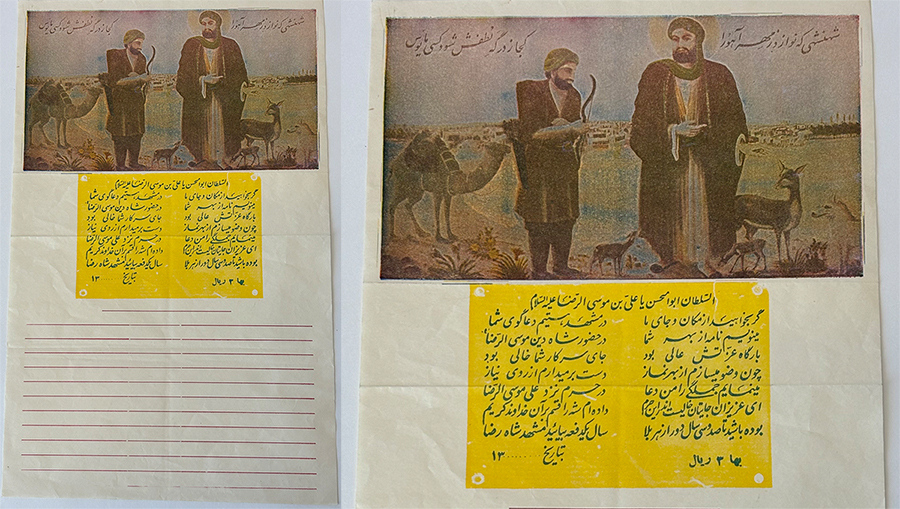
Iran, circulating in Mashhad, ca. 1950 Paper 7.08 × 8.85 in. (18 × 22.5 cm) Musée du quai Branly – Jacques Chirac, Paris, 71.2012.0.5799 Photograph courtesy of the museum
This item is a standardized letter to be mailed home by pilgrims from the shrine of Emam Reza in Mashhad. From top to bottom, the letter consists of three distinct elements: an image depicting Emam Reza in one of the most popular legends attached to him, as the ‘protector’ (zamen) of a gazelle that a hunter is about to kill; a poem in which the pilgrim addresses his family and friends at home; and additional empty lines to add an individual message.
The photorealistic image of Emam Reza as the protector of the gazelle apparently reproduces an undated painting preserved in the museum of the Holy Shrine (Astan-e Qods-e Razavi) (figs. 1–2).
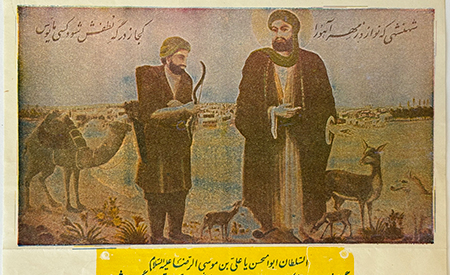
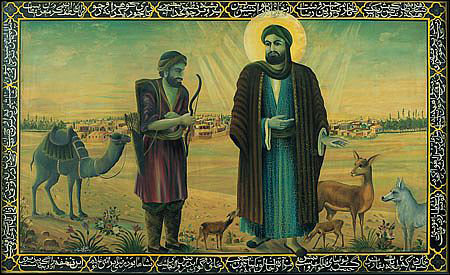
The allusion to Emam Reza as the protector of the gazelle is ubiquitous in Mashhad and visible on innumerable souvenirs and works of art. It is even used as the name of accommodations for pilgrims (for example). Originally a minor event in the emam’s life, recent developments have stylized this episode as crucial evidence of Emam Reza’s compassion. The Malek Museum in Tehran preserves a painting made in 1388 Sh/2009 in the naïve ‘coffee-house’ style by Mohammad Farahani, a student of the famous master Hosayn Quller Aqasi (fig. 3). The event is also one of the standard scenes illustrated on posters that serve as souvenirs of pilgrimage to the tomb of Emam Reza (see no. 40).
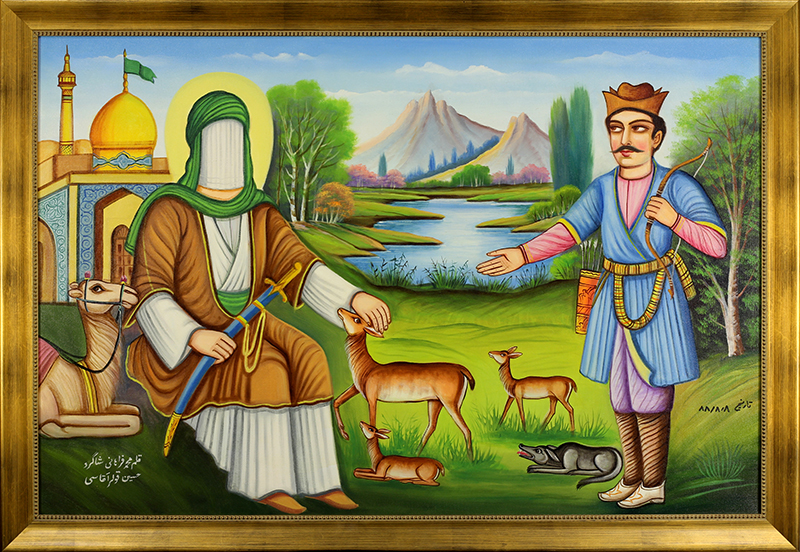
The letter’s second element is a message in seven rhyming couplets in which the speaker and sender addresses his family and friends at home, praising his visit to the shrine of Emam Reza and lamenting the fact that the addressees are not there themselves. The poem ends with a line stating that everyone who visits the shrine once a year will suffer no misfortune for a hundred and thirty years to come. On the bottom right, the price of 3 riyal is specified, and on the bottom left, there is a space for adding the specific date (day, month, and year) to the pre-printed number 13 for the century (1300 Sh corresponds to 1921).
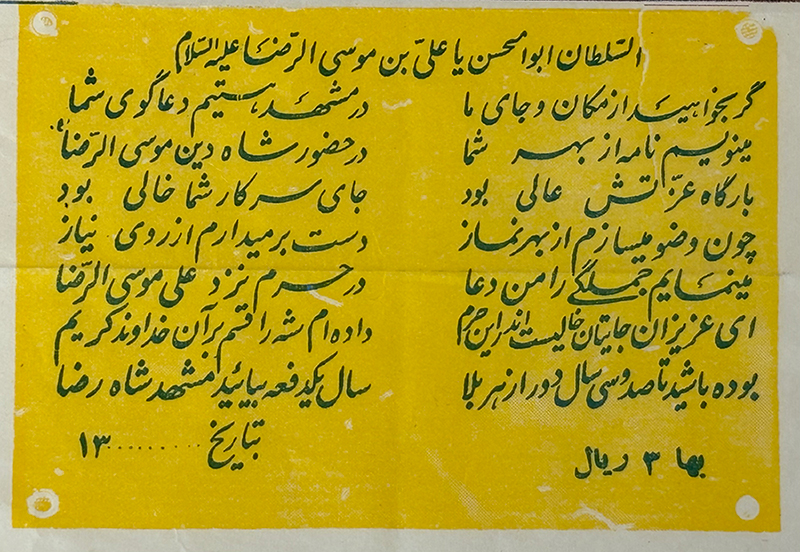
Apparently, there existed different versions of this standardized letter. A second version with an idealized portrait of Emam Reza, presumably also from around 1950, is also preserved in the museum (fig. 5). Both letters were acquired in 2012.

Citation: Ulrich Marzolph, “Standardized letter for pilgrims to the Shrine of Emam Reza at Mashhad.” Catalog entry in The Emamzadeh Yahya at Varamin: An Online Exhibition of an Iranian Shrine, directed and edited by Keelan Overton. 33 Arches Productions, January 15, 2025. Host: Khamseen: Islamic Art History Online.
